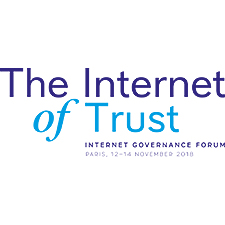Envisaging the pillars of discussions for G20 in 2019
14 Nov 2018 12:30h - 13:30h
Event report
[Read more session reports and live updates from the 13th Internet Governance Forum]
The session addressed strategies to strengthen multistakeholder processes within the G7 and G20 frameworks. It raised the need to gather together sectorial groups and work closely from the beginning of the preparation process with them, including in high-level meetings. Under the German G20 presidency, this way of proceeding resulted in a G20 roadmap on digital issues. The Canadian delegation has worked on bridging the gender gap by creating the gender equality group to support gender as a cross stepping theme along to the Canadian presidency of the G7. The association of #Jamais Sans Elles has claimed a general commitment to the inclusion of women in multistakeholder events.
The session was moderated by Mr Yoichi Lida, Director for International Research and Policy Coordination, Global ICT Strategy Bureau, Ministry of Internal Affairs and Communications, Japan, who started by highlighting that the session was focused on the synergies between the G7 and G20. Lida had received a proposal from the French delegation to discuss methods to strengthen multistakeholder processes within the frameworks of the G7 and G20. He stressed that the main goal of the Japanese delegation is to strengthen multistakeholder participation. It also aims to engage, in the next meeting, in topics of accessibility, the digital divide, infrastructure, active contingent, artificial intelligence, and cybersecurity. He said that he requested speakers from the previous G7 and G20 presidencies and the engagement groups to discuss how they used multistakeholder powers in their preparations for the annual meeting, and the main difficulties they encountered.
Ms Daniela Broenstrup, Federal Ministry for Economic Affairs and Energy, Germany, said that Germany had tried, under their G20 presidency, to gather together with multistakeholder groups, such as Youth 20, Women 20, and Science 20. They worked closely from the beginning of the preparation process with these groups, including in high-level meetings. This way of proceeding was fruitful, because as an outcome the G20 roadmap on digital issues was created.
Mr Samuel Willis, Ministry of Industry and Economic Development, Canada, flagged that the current administration in Canada is committed to gender balance. The gender equality group has been created to support gender as a cross-stepping theme along with the Canadian presidency of the G7. They have also organised a conference call with 32 women’s organisations to be present in the last meeting. In three weeks, the G7 multistakeholder meeting on AI will take place in Montreal. The intention is to collate governmental sector, civil society, private actors and academic research community views on AI. Canada strongly encourages Japan to keep working on this prominent issue during its G20 presidency.
Mr Étienne Parizot, Founder, #Jamais Sans Elles, started by supporting women’s inclusion in all sectors of society. He suggested that multistakeholder events should commit to bridge the gender gap by making all actors pledge: ‘I commit myself to never participating in any panel, conference or expert meeting of any sort, if there are no women involved.’ This solution is very straightforward, and has provoked a remarkably efficient response from events and committees to pay attention to the gender gap. Many prominent stakeholders in the digital world, including some sessions at the last G20 meeting in Argentina, have adopted the pledge and promoted it. The pledge is not only about the participation of women, but also about having women in key leading positions in all types of environments. The French Foreign Affairs Department has also committed to engage in the pledge.
By Ana Maria Corrêa
Related topics
Related event

